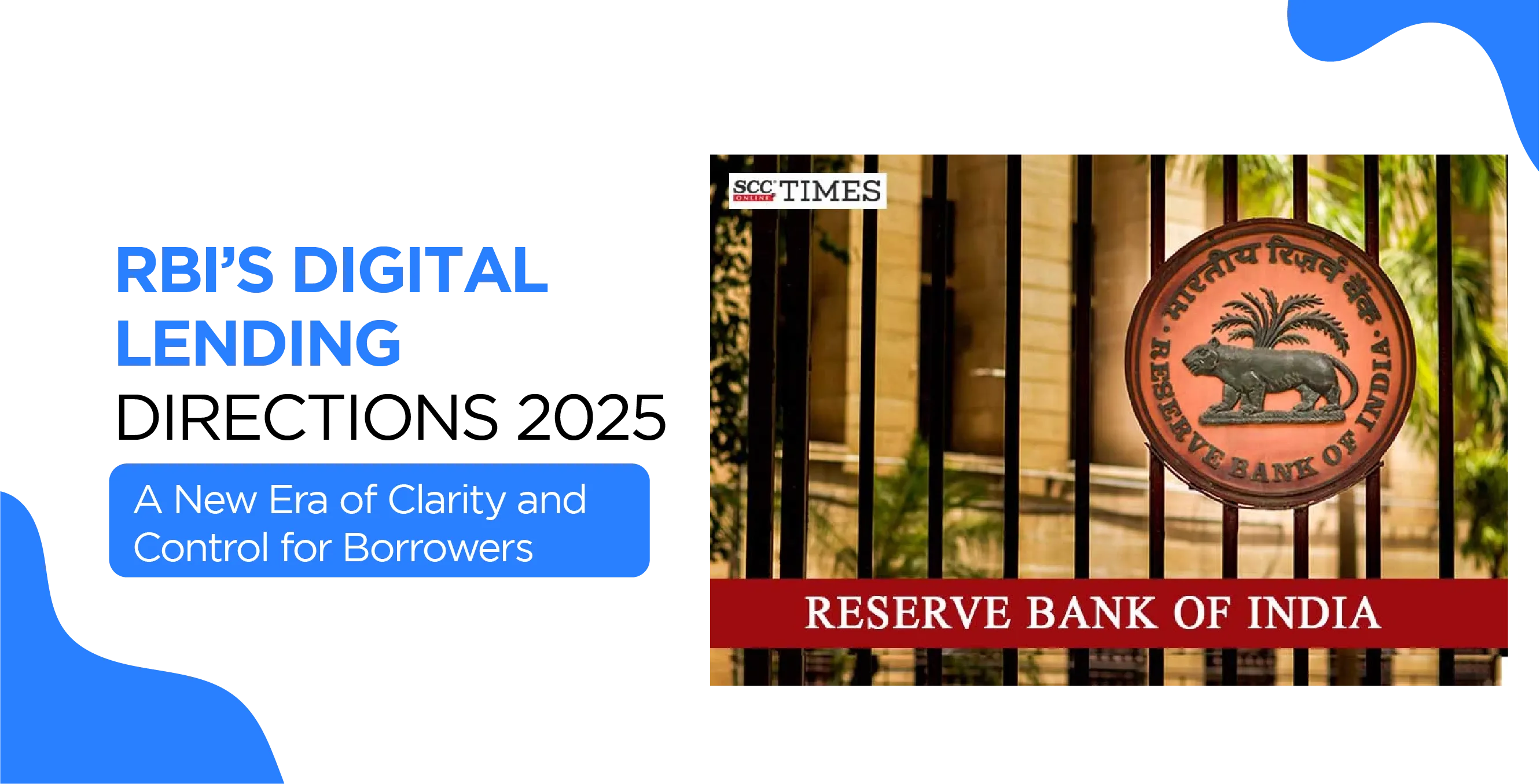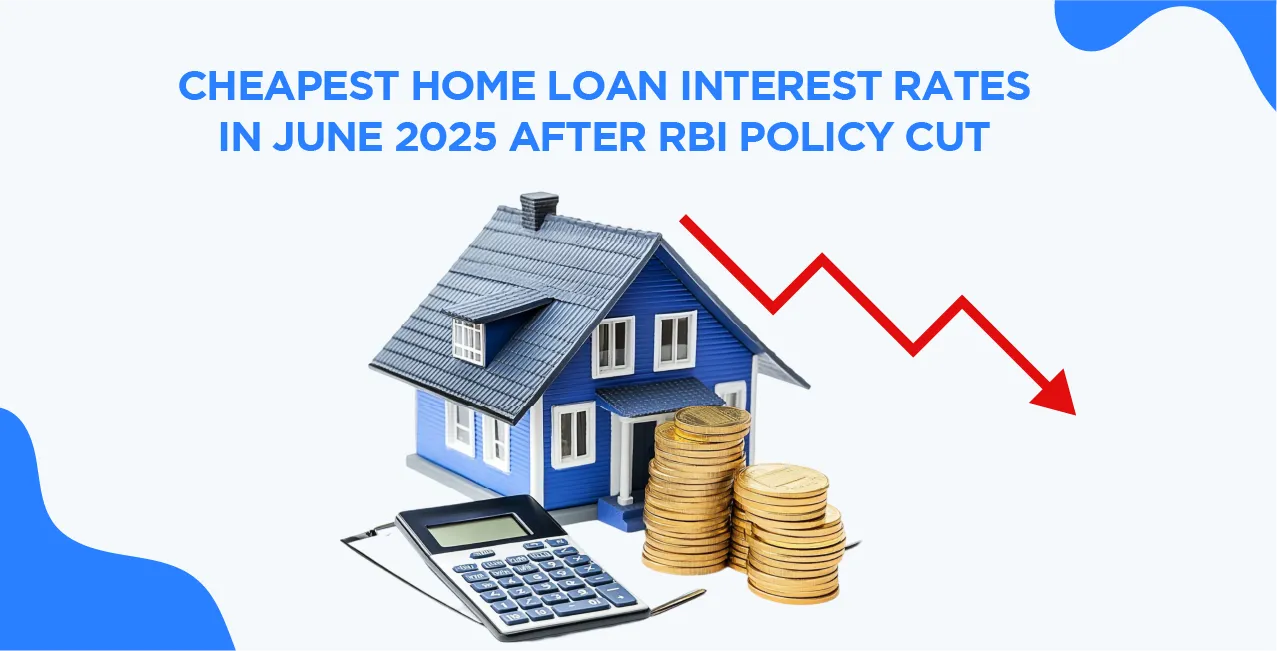
Author
LoansJagat Team
Read Time
5 Min
15 May 2025
RBI’s Digital Lending Directions 2025: A New Era of Clarity and Control for Borrowers
As digital lending becomes more common in India, cases of hidden fee charging, abuse of personal information, and harassment from recovery agents have increased.
In light of this, the Reserve Bank of India (RBI) released a set of strong, explicit rules under its Digital Lending Directions to clean up this heavily abused sector by increasing its transparency, borrower protection, and accountability to digital lenders. This article is sourced from well-researched pieces published by The Economic Times BFSI, The Hindu Business Line, Business World and the RBI's official website.
The framework, which kicks in from May 13, 2025, covers everything from how loans are disbursed to how borrower data is handled and even gives users the right to walk away from a loan within 24 hours.
Think of it like this:
When Priya, a 27-year-old from Bengaluru, took a ₹20,000 loan from a quick online app, she didn’t expect trouble. But ₹3,000 was cut as a processing fee, and she later learnt the interest rate was almost 60%. When she missed an EMI by just two days, the app started calling her friends and family.
Under the new RBI rules, such apps must be officially registered, all charges must be disclosed upfront, and strict rules on data and recovery must be followed. If they had been introduced before, Priya might have avoided the stress and opted for a safer, more reliable lender.
No Place to Hide: RBI Makes It Compulsory to Report All Lending Apps
From May 13, 2025, the RBI is implementing a new rule: if you're an NBFC or bank with a lending app, you'll have to report it on the CIMS portal.
Read More - Why Some Loan Apps Charge Higher Interest Than Banks
- Deadline to submit: June 15, 2025
- Who's affected? Every Regulated Entity (RE) using a Digital Lending App (DLA), whether directly or through a lending partner.
This isn’t just red tape—it’s RBI’s way of cleaning up the digital lending mess. Too many shady apps, zero accountability, and borrowers stuck in traps. By requiring official reporting, the RBI is building a central list of verified apps that both users and regulators can trust.
If your app’s not on the list, it might as well not exist.
So if you're in the digital lending business, better get your house in order—because this time, the rules come with a deadline.
RBI Takes Huge Step to Enhance Safety in Digital Lending: Public Directory
The Reserve Bank of India (RBI) announced a Public Directory of approved Digital Lending Apps (DLAs) as part of a wider effort to make consumers safer and bring transparency to digital lending.
The directory will be put up on the RBI's website by July 1, 2025.
The new Public Directory will list all RBI-approved digital lending apps, giving consumers a quick and easy way to check if a lending platform is legitimate before borrowing money.
With digital lending growing, fake lending apps have also been on the rise, making this move all the more necessary to protect everyday borrowers.
Why Does This Matter?
With so many new digital lending apps, it's becoming harder for consumers to distinguish the good ones from the bad ones. The Public Directory will help by providing an open, reliable list of verified apps, and thus, only the genuine platforms will be in the spotlight.
The table below provides a brief overview of it:
What’s Happening | When | Details |
Reporting Starts | May 13, 2025 | Regulated entities will begin reporting their apps on the CIMS portal. |
Submission Deadline | June 15, 2025 | Last day for entities to submit their app details. |
Public Directory Launch | July 1, 2025 | A go-to list of all authorised DLAs will be made available. |
Where to Access It | RBI’s official website | Consumers can easily check if their lender is on the list. |
Heads Up: As per the new rules, all regulated entities must submit their DLA details through the CIMS portal starting May 13, 2025. This move will make the whole process of digital lending a lot more transparent.
What the RBI Wants You to Know About Your Data
With more people turning to digital lending apps, the RBI is stepping in to protect your personal data. The new rules make it clear: your information isn’t up for grabs.
Here’s what’s changing:
What’s Protected | What the Rules Say |
Your Consent Matters | No data collection without your clear permission—no buried fine print. |
Mobile Privacy | Lenders can't peek into your contacts or media unless you say yes. |
Only What’s Needed | Apps can only collect data that’s essential to process your loan. |
Audit Logs Required | Every access to your data must be traceable—nothing can be hidden. |
No Random Sharing | Your data can’t be passed around to third parties without your say-so. |
These steps aren’t just about compliance—they’re about restoring trust in a space that’s seen its share of shady practices.
RBI’s Cooling-Off Rule: Take a Pause Before You Commit
The RBI has introduced a cooling-off period of at least one day for digital loans, giving borrowers time to reconsider before they make any final commitments. You can now cancel your loan within this period without any penalties—just a clearly stated processing fee.
What You Need to Know:
What’s Changing | What It Means for You |
1-Day Cooling-Off | You’ll have at least 24 hours to rethink your loan without any penalties. |
Exit Without Penalty | If you change your mind, you can cancel within the cooling-off period with no penalties, except for a processing fee. |
Only a Processing Fee | The lender can charge you only a one-time processing fee, which must be disclosed upfront. |
Clear Loan Terms | All fees, including the cancellation process, will be clearly explained in the Key Fact Statement (KFS). |
Applies to All Digital Loans | Whether it's a small ₹5,000 loan or a larger sum, this rule covers all digital loans. |
This change is all about giving you time to make sure the loan is really what you need, without the pressure.
Clear and Transparent Loan Information for Borrowers
To help borrowers make informed decisions, the RBI has set clear guidelines for Lending Service Providers (LSPs) and digital lending platforms. These rules ensure transparency and fairness in loan offers:
Also Read - Loan Fraud in the Digital Age: New Scams and Advanced Defences
Comprehensive Disclosure: Lenders must show all loan offers matching the borrower's request. This includes key details like APR, loan tenure, repayment terms, and any penal charges. No hidden fees, no surprises.
Clear Ranking Criteria: If loan offers are ranked, the criteria must be publicly disclosed and free from bias, ensuring fair comparisons.
Non-Matching Offers: If a loan doesn’t meet the borrower’s criteria, they must be informed about it upfront so they don’t miss out on better options.
Key Fact Statement (KFS): Borrowers will have easy access to all terms in a Key Fact Statement for every loan, giving them a clear picture of what they’re agreeing to.
These changes are aimed at eliminating hidden agendas, ensuring borrowers get clear, unbiased, and relevant information to make smart financial decisions.
Conclusion: A New Era for Safer Digital Lending
The RBI’s Digital Lending Directions 2025 are a game-changer for borrowers in India, offering clearer rules and better protection. With the mandatory reporting of Digital Lending Apps (DLAs) and the introduction of a Public Directory, consumers now have an easy way to check if a lender is legitimate.
The new rules also ensure transparent loan terms, stronger data privacy, and a cooling-off period for borrowers to rethink their decisions. These changes aim to create a safer, more trustworthy digital lending space, giving borrowers the confidence they need to make informed financial choices.
Other News Pages | ||
About the Author

LoansJagat Team
‘Simplify Finance for Everyone.’ This is the common goal of our team, as we try to explain any topic with relatable examples. From personal to business finance, managing EMIs to becoming debt-free, we do extensive research on each and every parameter, so you don’t have to. Scroll up and have a look at what 15+ years of experience in the BFSI sector looks like.

Quick Apply Loan
Subscribe Now
Related Blog Post

LoansJagat Team • 10 Jun 2025

LoansJagat Team • 06 Jun 2025

LoansJagat Team • 22 Sep 2025